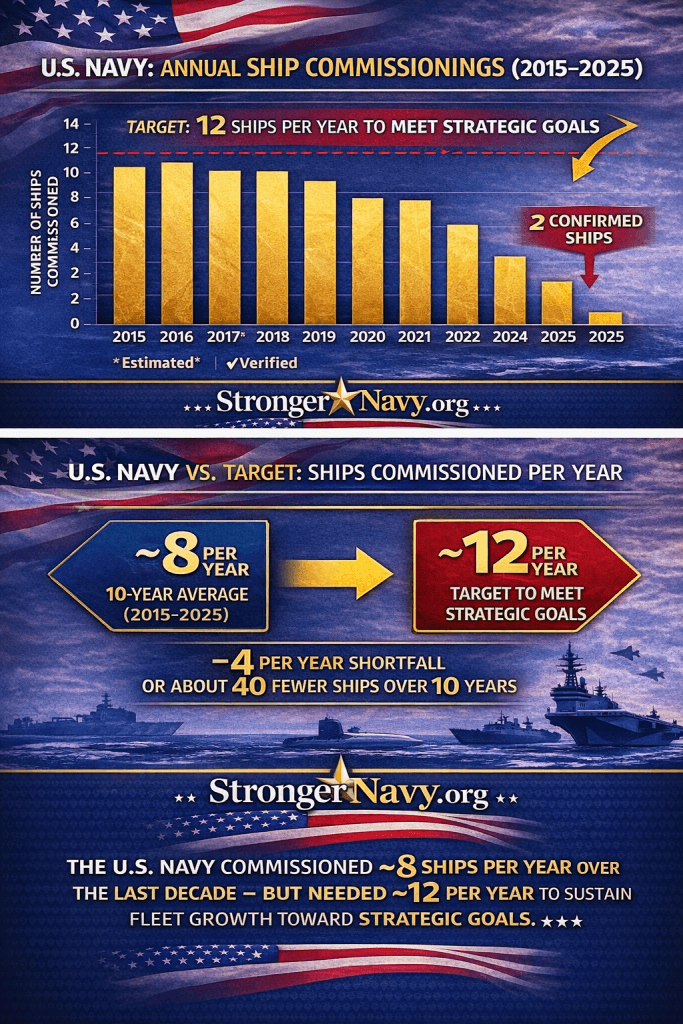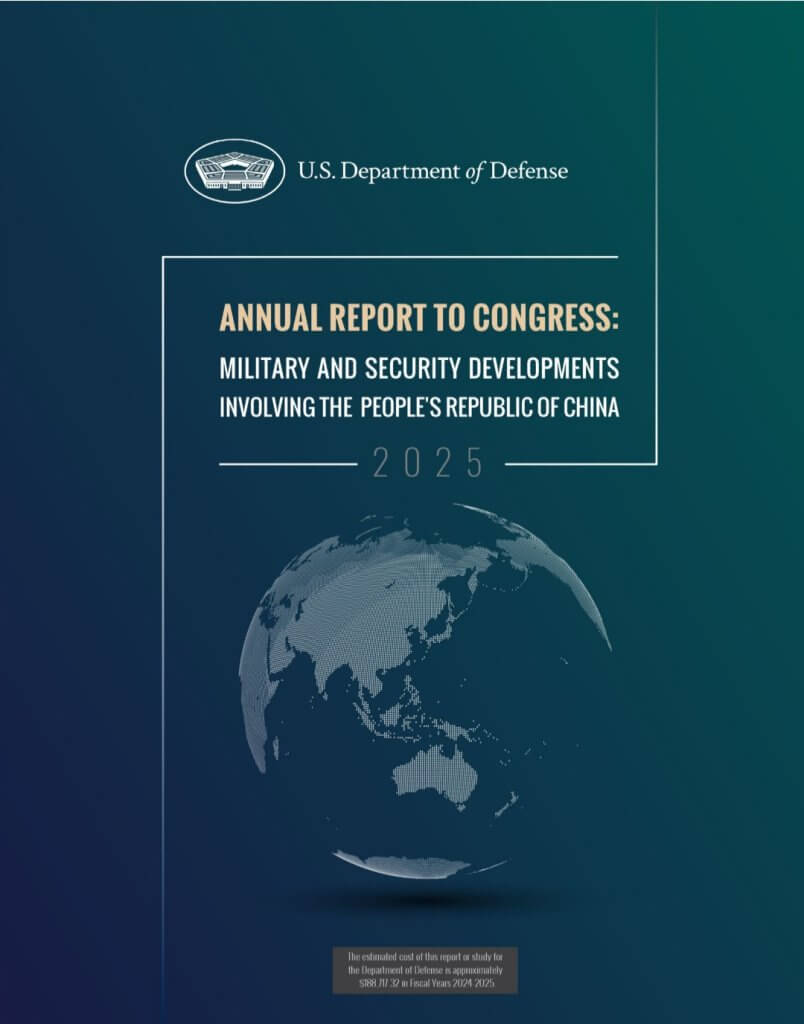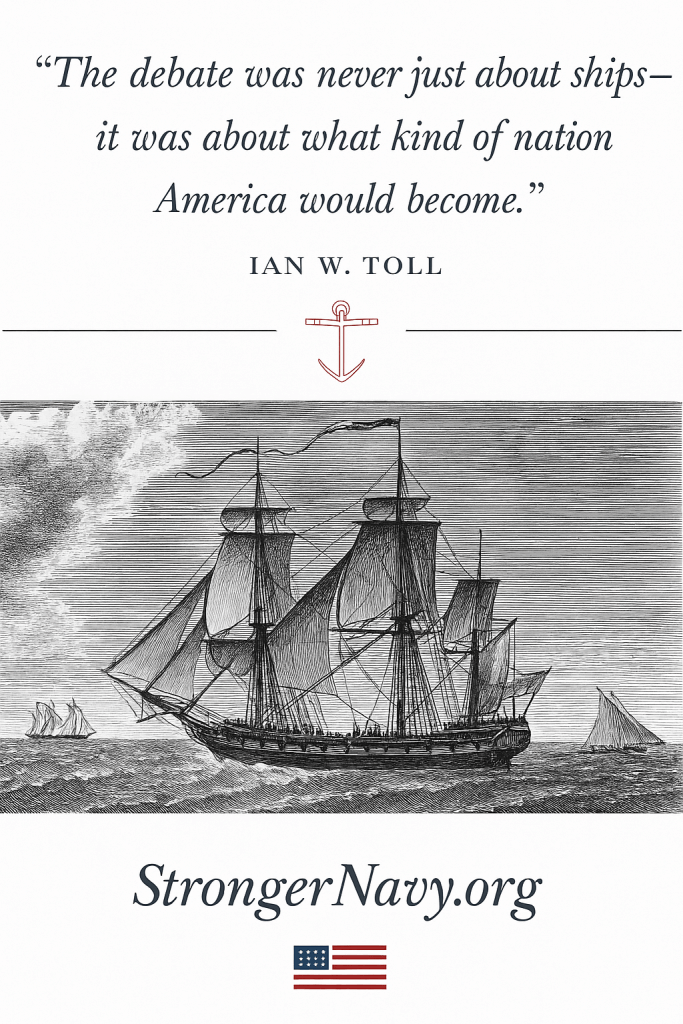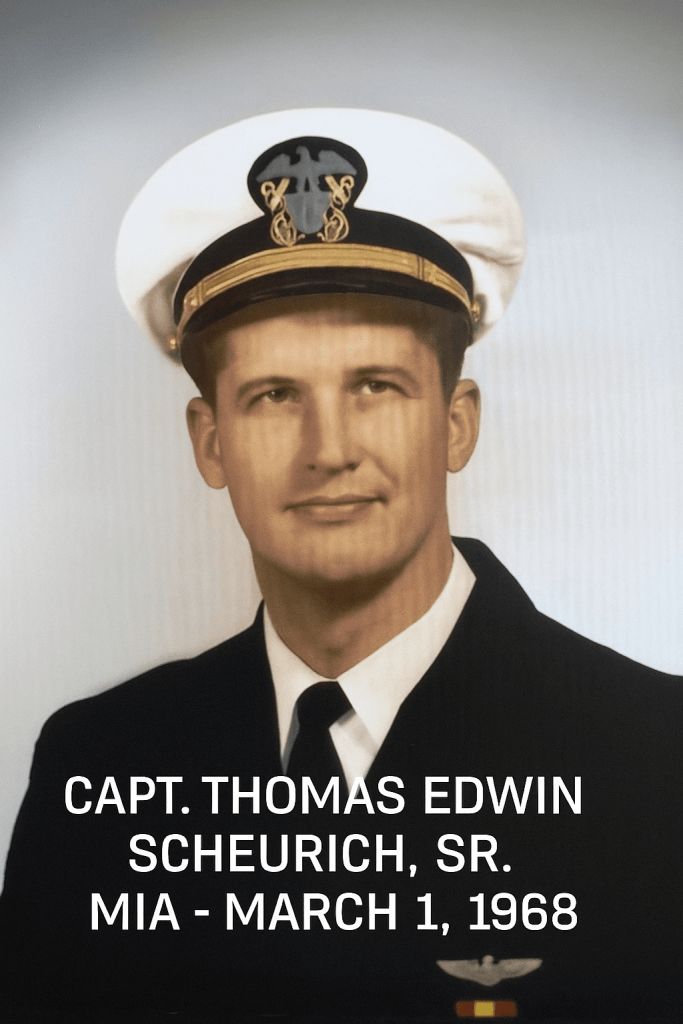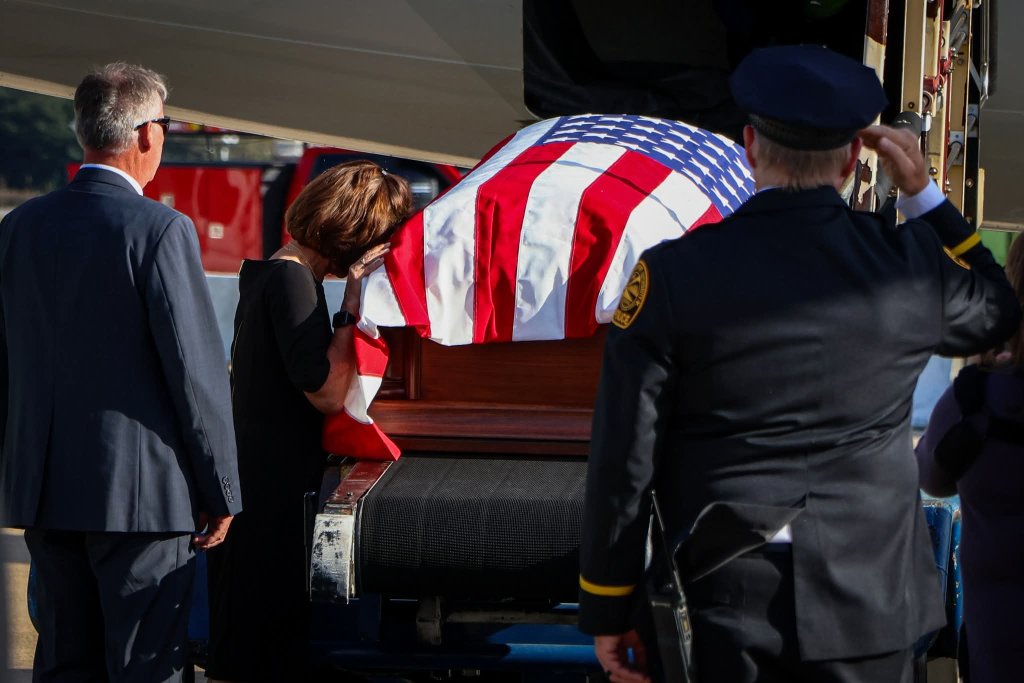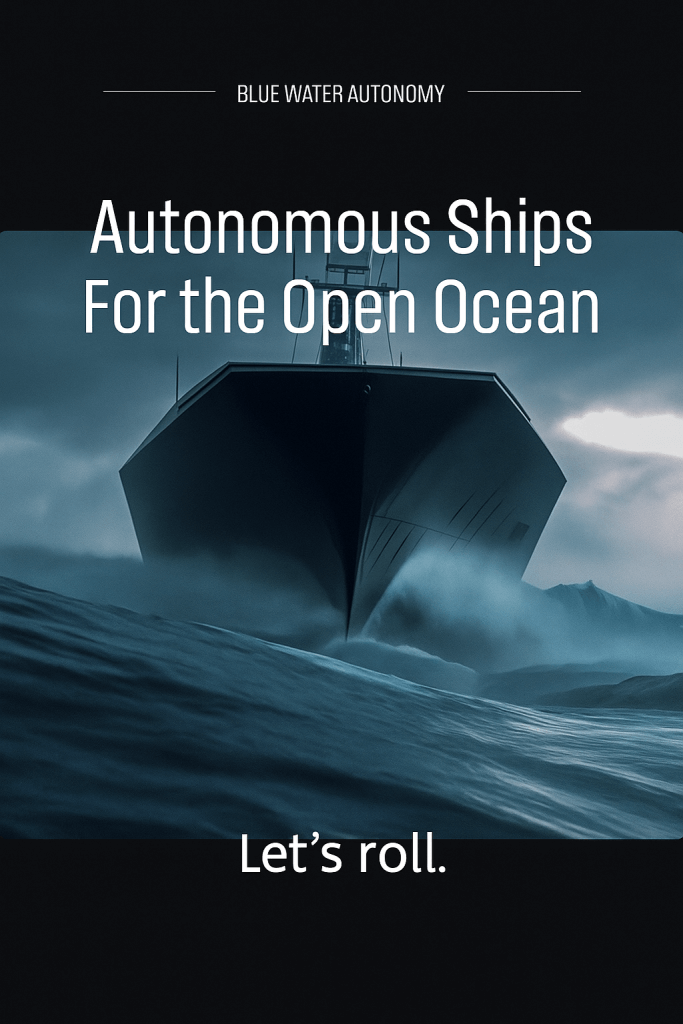
Americans Support a Strong Navy — and Expect Readiness to Match
While public debate and media commentary continue, Americans for a Stronger Navy looks under the hood — at what Americans are actually saying and feeling when asked directly about naval strength and readiness.
The 2025 Reagan National Defense Survey offers a rare opportunity to move past headlines and examine public sentiment itself. Rather than reacting to daily news cycles, this analysis focuses on the underlying signals Americans are sending about national security, deterrence, and the role of naval power in an increasingly uncertain world.
What Americans Are Saying
The survey shows strong and durable support for military strength. Eighty-seven percent of Americans believe military superiority matters, and seventy-one percent believe global peace depends on American strength. A majority believe the United States maintains superiority at sea.
Naval power remains central to how Americans think about deterrence, stability, and global leadership. This support is not tied to a single region or conflict. It reflects a broader expectation that the United States should retain the capability to protect its interests, allies, and maritime commerce.
The Confidence Gap
Alongside that support, the data reveals unease. Only forty-nine percent of Americans believe the U.S. military could win a major war overseas, and just forty-five percent believe it can effectively deter foreign aggression.
This gap does not reflect opposition to the military. It reflects concern about whether readiness, capacity, and sustainability are keeping pace with the responsibilities Americans expect the Navy to carry. The difference between support and confidence is one of the most important signals in the survey.
Capacity Matters — and Americans Know It
Two findings stand out. Sixty-eight percent of Americans support increased investment in shipbuilding and manufacturing. Ninety-four percent believe the United States needs greater domestic manufacturing capacity.
Americans appear to understand something fundamental: naval strength is not defined solely by ships at sea, but by the industrial systems that build, repair, crew, and sustain them over time. Shipyards, skilled workers, suppliers, dry docks, and logistics networks are not abstract concepts. They are the difference between plans on paper and forces that are ready when needed.
What the Survey Reveals About Deterrence
The survey also sheds light on how Americans view deterrence in practice, particularly in the Indo-Pacific.
When asked about Taiwan, seventy-seven percent of Americans say it is important for the United States to help defend the island against Chinese aggression. If China were to invade Taiwan, sixty percent say they would support committing U.S. forces to Taiwan’s defense, up from forty-eight percent the prior year. Majorities also support additional measures designed to deter aggression and strengthen regional stability, including deploying more U.S. military assets to the region, sending additional military equipment to Taiwan, imposing economic sanctions, and establishing air and maritime control measures.
These responses do not reflect a desire for conflict. They reflect an expectation that deterrence must be credible. Americans appear to understand that commitments only matter if the United States has the capacity to back them up.
Deterrence at sea is not abstract. It depends on available ships, trained crews, maintained platforms, secure logistics, and resilient industrial support. When Americans express support for defending allies and preserving stability in the Indo-Pacific, they are implicitly expressing expectations about readiness — and about whether U.S. sailors have the tools they need to do their jobs effectively and safely.
From Public Sentiment to Public Support
Americans for a Stronger Navy is politically neutral. We do not support parties or candidates. But we are not neutral on readiness.
Our role is to articulate what Americans are saying and feeling — and, when appropriate, to state clearly when legislation aligns with those expressed expectations.
Based on the survey data and the readiness challenges it highlights, Americans for a Stronger Navy supports the SHIPS for America Act. This support is grounded in alignment, not politics.
Why We Support the SHIPS Act
The SHIPS for America Act does not dictate naval strategy or force employment. Its relevance lies in strengthening the foundations naval readiness depends on.
It addresses shipbuilding and repair capacity by expanding and stabilizing the yards that build and maintain naval vessels. It supports maritime workforce development by growing the skilled labor base the Navy cannot surge in a crisis. It strengthens industrial resilience and surge capacity by reinforcing the commercial and auxiliary maritime sector that supports naval logistics and sealift. And it promotes long-term sustainability by reducing boom-and-bust cycles that drive cost overruns, schedule delays, and readiness shortfalls.
What This Endorsement Is — and Is Not
Our support for the SHIPS Act is not partisan. It does not imply endorsement of every provision, and it does not replace the need for oversight, accountability, or debate.
It reflects a judgment that strengthening the maritime industrial base aligns with what Americans are asking for — and is necessary to close the confidence gap the survey reveals. If Americans expect deterrence to be credible, then policy should strengthen the capacity that makes deterrence real.
The Signal Americans Are Sending
The survey does not prescribe policy, but it does define expectations.
Americans are saying they value naval strength, deterrence over conflict, readiness that matches responsibility, and domestic capacity that sustains credibility. When expectations and outcomes align, confidence grows. When they drift apart, trust erodes.
Our role is to surface that signal clearly. The data speaks. Alignment is the challenge.


